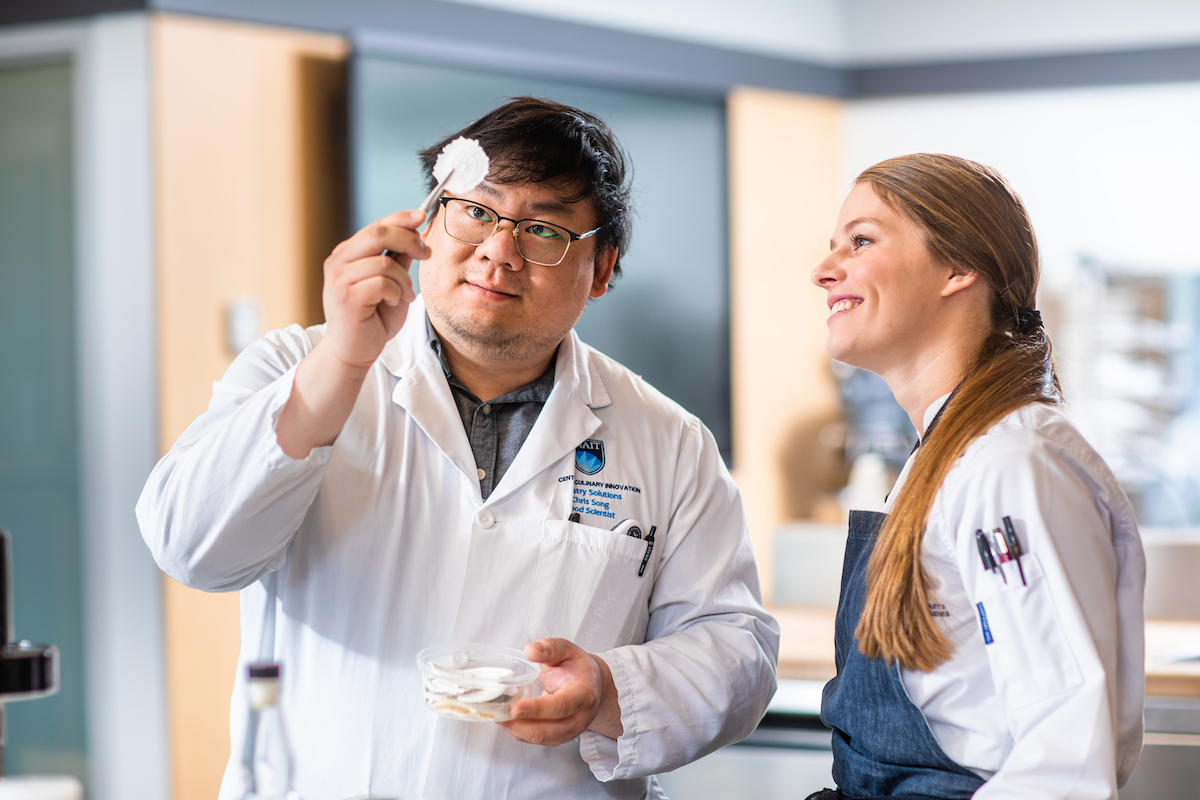Researchers at NAIT are innovating every step of Alberta’s food production to bolster the economy and make things tasty. But they don’t use recipes.
“I’m a food scientist, so we call them formulations,” says NAIT’s Centre for Culinary Innovation Manager Linda Ho. “And the centre is industry driven, so if industry has a problem — say, a shelf-life problem, or a formulation problem, or they’re looking for flavour development — they come to us, and we solve that using science.”
But the centre’s work doesn’t start or end at making food more flavourful. The centre innovates the entire food stream, from planting to the point of sale. “It’s not just creating [formulations], it’s also looking at things like packaging technology that can improve shelf life,” Ho says.
“Companies come to us and ask, ‘How do we scale this up?’ They’ll come to us with a formulation and we tweak it for them, so that it can be commercialized successfully.”
Successfully commercializing Alberta-grown crops also means ensuring local producers reap the benefits of what they’ve literally sowed. Ho says that, despite Alberta being Canada’s largest exporter of oats, “we do not sell it as a consumer packaged good. We let Quakers do that,” by processing and packaging Albertan oats and then selling it back to Canadian consumers. “How much more money are they making off of our oats that could be put into our local economy?”
Throughout the process, researchers stay on the lookout for waste streams. “We have all these pulses, we have all these peas,” Ho explains. “And there are companies within Alberta that are fractionating them — breaking them into parts, such as protein.” The companies can then sell the protein to meat analog companies like Beyond Meat, whose products are packed with pea, rice and fava protein.
“Right now, [Beyond Meat] gets a lot of that protein overseas, but we’re trying to build that ecosystem here. One of the really cool companies is PIP, an agri-tech company producing world class pea protein, located in Lethbridge. PIP specializes in producing clean, or neutral-tasting, proteins as opposed to other pea proteins that tend to be bitter, have off-flavours or a heavy pea flavour. By doing so, we can formulate more mild flavours such as vanilla. I’ve not had a protein that clean in my life.”
